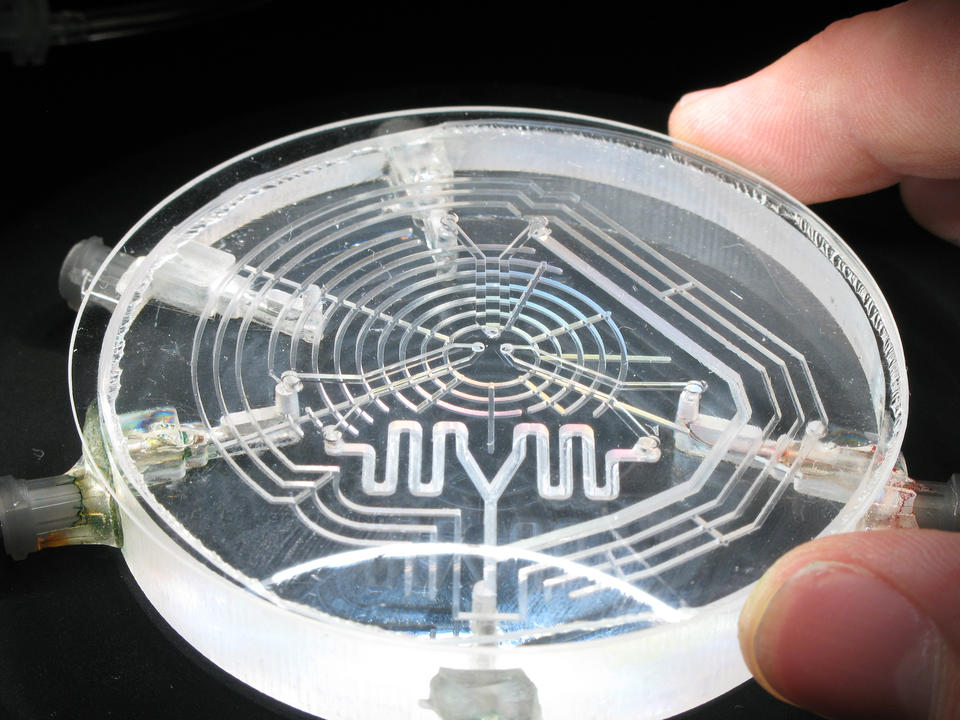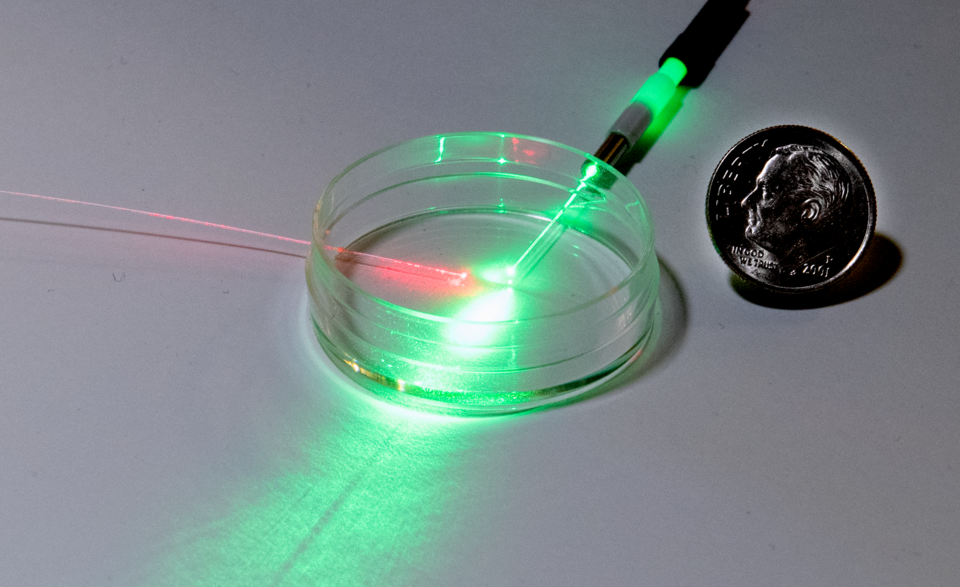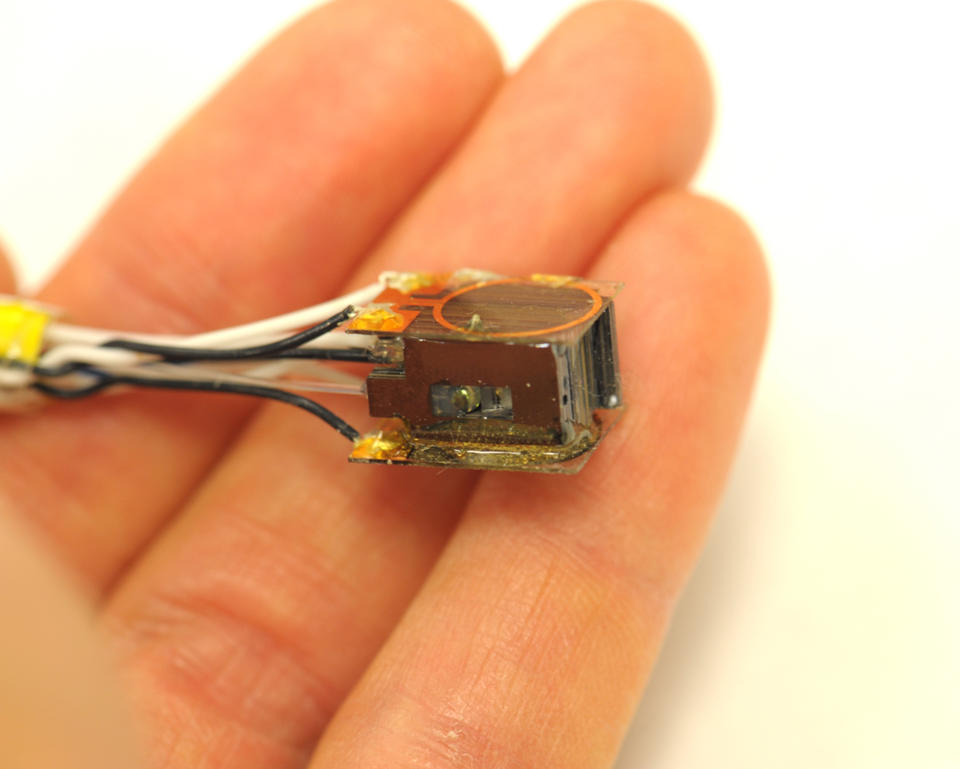Biosciences
In 21st-century biology and beyond, many important breakthroughs will likely require chip-scale instruments for measuring the flow of tiny amounts of fluid. This is certainly true in pharmaceutical treatments in which ultraprecise doses of expensive drugs must be administered in state-of-the-art medical therapies. And many medical techniques rely on the ability to analyze exceedingly small samples, whether it is a fraction of a drop of blood for diagnostic tests or trace amounts of DNA recovered at a crime scene.
Since biological systems are generally fluid-based, NIST scientists are advancing the science and technology of mixing and measuring fluids at the microscopic scale. This field, known as microfluidics, holds the key to accelerating drug research as well as making rapid measurements on large biological samples.

Drug discovery, for example, often involves mixing different combinations of minuscule amounts of many different chemical ingredients in interconnected channels with laserlike precision.
Microfluidics creates a sort of microscopic “water park” for biological samples, with many components collecting, directing, separating and classifying fluids and their contents. But microfluidics components and systems are often incompatible with each other, due to an almost complete lack of standardization. NIST is working with other institutions to develop “plug and play” compatibility between microfluidics components and systems, to accelerate innovations and new capabilities in this field.
NIST is also advancing the ability to measure the smallest objects we can observe in fluids. Researchers are packing probes and sensors into devices the size of a nickel that can detect and analyze numerous properties of individual biological cells.
Researchers are also developing miniaturized light-based methods for measuring basic chemical properties such as pH in biological samples. This approach promises to enable laboratories to accurately monitor the health of cells being grown for therapies that restore bone, cartilage and other specialized tissues in patients.

Other NIST researchers are making miniaturized magnetic sensors that can be used to sensitively measure brain activity to diagnose and treat patients with disorders such as epilepsy. In the field of radiation medicine, a NIST team has demonstrated a chip-scale device that can be embedded in an ID card to measure radiation doses. In the event of a nuclear incident, the device could enable responders to identify and treat individuals who are exposed to dangerous levels of radiation.

To enable more precise radiation therapy for cancer, another NIST project is developing a chip-scale thermal imaging device that could detect the radiation absorbed by the body in specific locations 1,000 times smaller than current technology allows.
NIST on a Chip will also help to bring medicine to remote locations with greater speed. Such easily deployable devices will enable more real-time analysis of blood or other biofluids in doctors’ offices, replacing many diagnostic tests previously sent to off-site laboratories.

